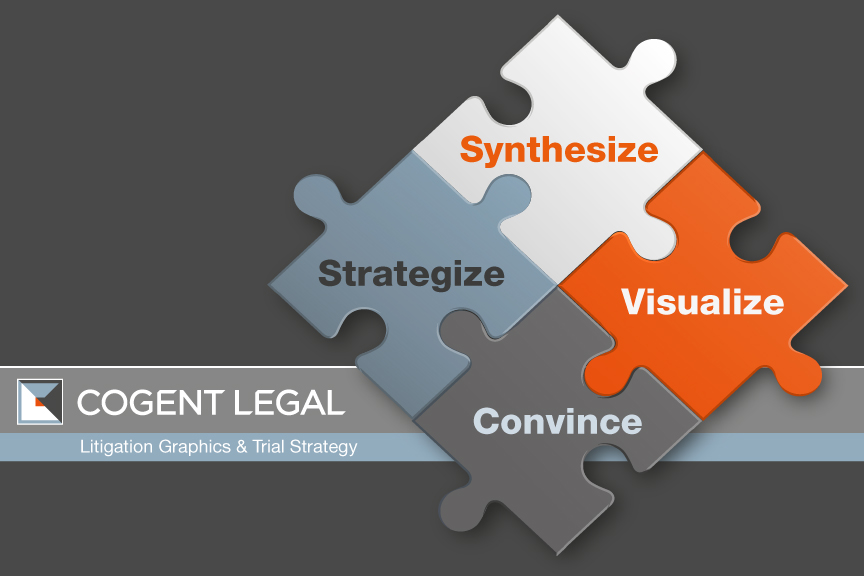
This post is written by Michael Kelleher, Esq.
Before I recently joined as a litigation consultant here at Cogent Legal, “Words” was my nickname at a previous job. Ironic, isn’t it, that “Words” is now working at a legal graphics provider?
I earned the nickname because I often dealt with long and complicated patents and contracts that caused many eyes to glaze over. I was general counsel at DS-IQ, a start-up company providing advertising and marketing software—fun work with a really talented team in an entrepreneurial, fast-moving environment. I wasn’t the only team member with a nickname; I worked with “Pictures” (our CEO) and “Numbers” (our VP of Finance).
“Pictures” lives and breathes PowerPoint because a big part of his job is presenting to customers and other groups. He knows how to get and hold attention in a meeting with images, and he would frequently substitute words in a slide with a diagram or photograph. “Numbers” is a wizard with Excel—in every situation, “Numbers” has models and scenarios whizzing around in the cells of spreadsheets.
“Pictures,” “Numbers” and I (“Words”) often collaborated on presentations, each preparing a set of draft slides for the others to review. We would then look at our draft slides together and talk about the upcoming presentation, and in the process would refine the slides by thinking through our message, our audience and how the meeting would flow. Some of the questions we’d ask each other:
- What do we hope to accomplish by the end of the presentation?
- What are the goals of the other side?
- Did the slides effectively communicate the message?
- Were PowerPoint slides the right tool to use, or should we instead or in addition use handouts, a white board or some other kind of media?
- Were the slides too busy and full of information?
- Would the audience be distracted instead of assisted by the slides?
- Would a diagram, picture or numerical information be more effective than words?
- Etc., etc. (you get the idea)
In those reviews, “Pictures,” “Numbers” and I always improved our presentations, but more importantly, we improved our message and how we would deliver it.
This collaborative process involved visualizing and synthesizing our information so that the words, data and images worked together powerfully. As a patent and technology attorney, I learned long ago that even if I’m first and foremost a “words” guy, I need to understand and integrate numbers and pictures seamlessly to develop and present my clients’ case as effectively as possible. And if I can’t handle graphics and data on my own, then I need to team up with those who can.
My experience working with experts in “numbers” and “pictures” turned out to be excellent training for my role at Cogent Legal: helping attorneys, particularly in the patent and intellectual property fields, develop case presentations for hearings and trials that use informational graphics, animations and other demonstratives. These “pictures” make complex, technical information easier to understand, and in the process tell an engaging narrative.
That brings me back to my rhetorical question: Why is “Words” working with a legal graphics company? Because Cogent Legal’s mission is not just about developing legal graphics; it is about developing the message, or story, of a case and communicating that message as effectively as possible.
Morgan Smith, the founder of Cogent Legal, and I are both attorneys. We have been in court, communicating to judges and juries. We know how difficult it can be to get your message across, particularly when you need to talk about science, technology or numbers. At Cogent Legal, we bring to the table trial experience along with innovative graphic design by Cogent’s producers and designers.
Through a collaborative process suggested by the puzzle graphic below, we help our clients find the right mix of words, numbers and pictures to get their messages across.
Enough for this blog post—it has too many words already. Next time, I’ll talk more about graphics in patent litigation. Until then, good luck in court and thanks for reading.
If you’d like to receive updates from this blog, please click to subscribe by email.


